Keratosis pilaris (KP) is a common skin condition that is characterized by small, rough, and sometimes red bumps that appear on the skin. It is most commonly found on the upper arms, thighs, and buttocks, but can also occur on other areas of the body. KP occurs when the skin produces too much keratin, a protein that helps to protect the skin. The excess keratin forms a plug that blocks the hair follicles, causing the bumps to form. KP is not contagious and is not harmful, but it can be unsightly and cause some discomfort.
KP is more common in people with dry skin, and tends to be worse during the winter months when the air is dry. It can also be more common in people with certain medical conditions, such as atopic dermatitis or eczema.
There are several things that can be done to manage KP:
-
Moisturize: Keeping the skin moisturized can help to reduce the appearance of KP. Look for moisturizers that contain urea, lactic acid, or glycolic acid, as these ingredients can help to soften and exfoliate the skin.
-
Exfoliate: Gentle exfoliation can help to remove the dead skin cells that contribute to the formation of KP. Look for products that contain alpha-hydroxy acids (AHAs) or beta-hydroxy acids (BHAs) to help exfoliate the skin.
-
Avoid harsh soaps: Harsh soaps can dry out the skin and worsen KP. Look for gentle cleansers that are free from fragrances and other irritants.
-
Use a humidifier: Using a humidifier can help to add moisture to the air, which can help to reduce dryness and improve the appearance of KP.
-
See a dermatologist: If your KP is severe or causing discomfort, you may want to see a dermatologist. They can prescribe topical medications or recommend other treatments, such as laser therapy or microdermabrasion, to help manage the condition.
Common Symptoms of Keratosis Pilaris
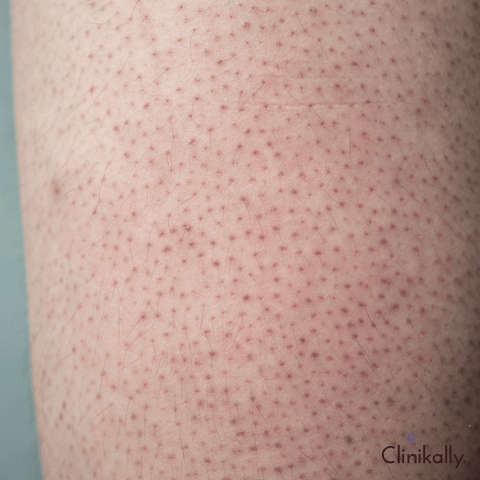
The most common symptoms of keratosis pilaris (KP) are small, rough, and sometimes red bumps on the skin. These bumps can be itchy, and may also feel like sandpaper or chicken skin. KP most commonly appears on the upper arms, thighs, and buttocks, but can also occur on other areas of the body, including the face.
Other symptoms of KP may include:
-
Dry or rough skin: KP often occurs in people with dry skin, and the bumps can make the skin feel rough and dry.
-
Redness: In some cases, KP bumps may be red and inflamed, especially if they become irritated or infected.
-
Bumps that get worse in cold weather: KP may become more noticeable and more uncomfortable during the winter months, when the air is dry and cold.
-
Small, white bumps: In addition to the rough, red bumps that are common with KP, some people may also develop small, white bumps that resemble whiteheads.
-
Itching: KP bumps can be itchy and uncomfortable, especially if they become irritated or infected.
It's important to note that KP is not harmful, and does not typically cause any pain or discomfort. However, it can be unsightly and may cause self-consciousness or embarrassment, especially if it occurs in visible areas such as the face or arms. If you are concerned about your KP or if it is causing you discomfort, you should see a dermatologist for advice and treatment options.
Moisturizing to Minimize Bumps

Moisturizing is an important part of managing keratosis pilaris (KP) as it can help to reduce the appearance of bumps and keep the skin soft and hydrated. When the skin is dry, it can exacerbate KP symptoms, making the bumps more prominent and uncomfortable. Here are some tips for moisturizing to minimize bumps:
-
Choose the right moisturizer: Look for a moisturizer that contains ingredients such as urea, lactic acid, or glycolic acid, which can help to exfoliate and soften the skin. Avoid moisturizers that contain fragrance or other irritants, as these can worsen KP symptoms.
-
Apply moisturizer regularly: Apply moisturizer to the affected areas at least once a day, and more often if necessary. Apply the moisturizer while the skin is still damp, as this can help to lock in moisture.
-
Use a thick cream or ointment: Thicker creams and ointments can provide more intense hydration and may be more effective at reducing the appearance of KP bumps than lighter lotions.
-
Avoid hot showers: Hot water can dry out the skin and worsen KP symptoms. Instead, take lukewarm showers and limit your time in the shower to 10 minutes or less.
-
Use a humidifier: Using a humidifier can add moisture to the air, which can help to prevent the skin from becoming dry and flaky.
Remember that moisturizing alone may not completely eliminate KP, but it can help to improve the appearance of bumps and make the skin more comfortable. If you are concerned about your KP or if your symptoms are severe, you should see a dermatologist for advice and treatment options.
Chemical Peels for Keratosis Pilaris
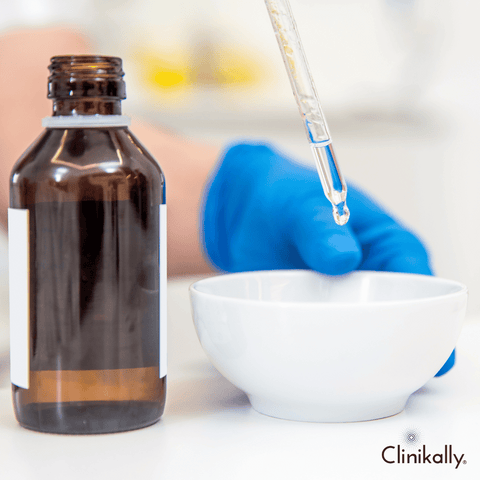
Chemical peels are a type of treatment that can be used to manage keratosis pilaris (KP). Chemical peels involve applying a chemical solution to the skin, which exfoliates and removes the top layer of skin, revealing smoother, healthier skin underneath. This can help to reduce the appearance of KP bumps and improve skin texture.
There are several types of chemical peels that may be used to treat KP, including:
-
Alpha-hydroxy acid (AHA) peels: These peels use glycolic acid or lactic acid to exfoliate the skin and improve skin texture. They are typically mild and may be suitable for people with mild to moderate KP.
-
Salicylic acid peels: Salicylic acid peels can help to exfoliate the skin and unclog pores, making them a good option for people with KP who also have acne.
-
Trichloroacetic acid (TCA) peels: TCA peels are stronger and more aggressive than AHA peels, and may be more effective at reducing the appearance of KP bumps. However, they can also be more irritating and may require more downtime for recovery.
Chemical peels should be performed by a licensed and experienced dermatologist or aesthetician, as they can cause skin irritation or other side effects if not done properly. People with certain skin conditions, such as eczema or rosacea, may not be good candidates for chemical peels. It's important to note that chemical peels alone may not completely eliminate KP, and additional treatments may be necessary to manage the condition. It's also important to maintain a good skincare routine, including regular exfoliation and moisturizing, to help manage KP symptoms.
Retinoids to Improve Skin Texture

Retinoids are a class of medication that can be used to improve skin texture, including in cases of keratosis pilaris (KP). Retinoids are derived from vitamin A and work by increasing cell turnover, which can help to unclog pores and exfoliate the skin. This can lead to smoother, clearer skin and a reduction in the appearance of KP bumps.
Retinoids are available in both prescription and over-the-counter formulations. Prescription-strength retinoids are generally more potent and may be more effective for treating KP, but they can also be more irritating and may require a longer adjustment period. Some common prescription retinoids for KP include tretinoin, adapalene, and tazarotene. Over-the-counter retinoids, such as retinol, are generally milder and may be suitable for people with mild to moderate KP. It's important to start with a low concentration of retinoids and gradually work your way up to higher concentrations to avoid irritation or other side effects.
Retinoids can cause some side effects, such as dryness, redness, and peeling, especially during the first few weeks of use. It's important to use retinoids as directed and to avoid using them too frequently or applying too much product, as this can worsen side effects. It's also important to use sunscreen when using retinoids, as they can increase the skin's sensitivity to the sun. Overall, retinoids can be an effective treatment option for improving skin texture in cases of KP. However, they may not completely eliminate KP and may need to be used in combination with other treatments, such as moisturizers or chemical peels, to manage the condition. It's best to consult with a dermatologist to determine the most appropriate treatment plan for your specific case of KP.
The Benefits of Glycolic Acid for Keratosis Pilaris
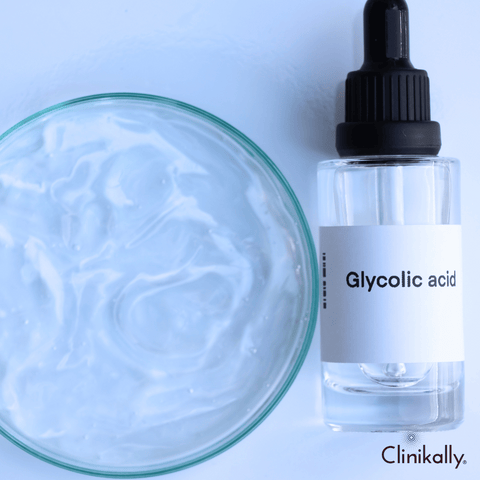
Glycolic acid is an alpha-hydroxy acid (AHA) that is commonly used in skincare products to exfoliate the skin and improve its texture. It can also be an effective treatment for keratosis pilaris (KP) due to its ability to exfoliate and soften the skin, which can help to reduce the appearance of KP bumps. Here are some benefits of glycolic acid for KP:
-
Exfoliation: Glycolic acid works by dissolving the bonds between dead skin cells, which can help to unclog pores and reduce the build-up of keratin that causes KP bumps.
-
Softening: Glycolic acid can also help to soften the skin, making it easier to remove any build-up of keratin and reducing the roughness and dryness associated with KP.
-
Brightening: Glycolic acid can help to improve skin tone and brightness, which can make KP bumps less noticeable.
-
Improved absorption: Glycolic acid can improve the absorption of other skincare products, such as moisturizers or retinoids, which can further improve the appearance of KP.
It's important to note that glycolic acid can be irritating to some people, especially if used in high concentrations or too frequently. It's best to start with a low concentration of glycolic acid and gradually work your way up to higher concentrations if needed. It's also important to use sunscreen when using glycolic acid, as it can increase the skin's sensitivity to the sun.
Overall, glycolic acid can be a beneficial ingredient for managing KP, but it may not completely eliminate the condition on its own. It's best to use glycolic acid in combination with other treatments, such as moisturizers or chemical peels, to achieve the best results. If you have concerns about your KP or if your symptoms are severe, you should see a dermatologist for advice and treatment options.
Lactic Acid for Gentle Exfoliation
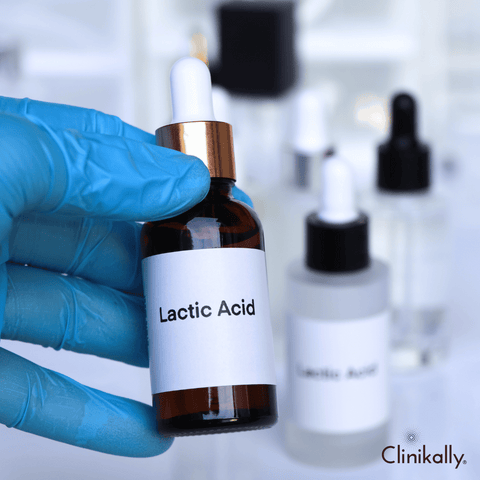
Lactic acid is another alpha-hydroxy acid (AHA) that can be used for gentle exfoliation and improving the texture of the skin. Like glycolic acid, lactic acid can also be effective in treating keratosis pilaris (KP). Here are some benefits of using lactic acid for KP:
-
Gentle exfoliation: Lactic acid is a mild exfoliant that can help to remove dead skin cells and unclog pores without causing irritation or dryness. This makes it a good option for people with sensitive skin or those who experience irritation with other exfoliants.
-
Moisturizing: Lactic acid can also help to moisturize the skin by improving its natural moisture barrier. This can help to reduce the dryness and roughness associated with KP.
-
Brightening: Lactic acid can help to improve skin tone and reduce the appearance of dark spots, which can make KP bumps less noticeable.
-
Non-irritating: Lactic acid is less likely to cause irritation or sensitivity compared to other AHAs, making it a good option for people with sensitive or reactive skin.
Lactic acid is available in various concentrations, and it's important to start with a low concentration and gradually work your way up to higher concentrations if needed. It's also important to use sunscreen when using lactic acid, as it can increase the skin's sensitivity to the sun. While lactic acid can be effective in managing KP, it may not completely eliminate the condition on its own. It's best to use lactic acid in combination with other treatments, such as moisturizers or chemical peels, to achieve the best results. If you have concerns about your KP or if your symptoms are severe, you should see a dermatologist for advice and treatment options.
The Power of Salicylic Acid for Bumpy Skin
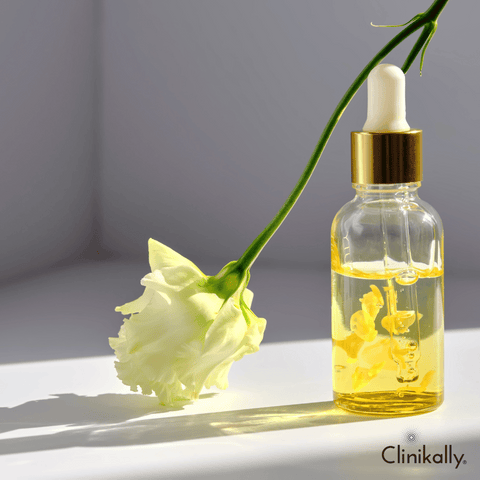
Salicylic acid is a beta-hydroxy acid (BHA) that is commonly used in skincare products to treat acne and other skin conditions. It can also be an effective treatment for bumpy skin, including keratosis pilaris (KP). Here are some benefits of salicylic acid for bumpy skin:
-
Exfoliation: Salicylic acid works by penetrating into the pores and dissolving the build-up of dead skin cells and keratin that can cause bumpy skin. This can help to unclog pores and reduce the appearance of bumps.
-
Anti-inflammatory: Salicylic acid has anti-inflammatory properties, which can help to reduce redness and inflammation associated with bumpy skin.
-
Anti-bacterial: Salicylic acid can also help to kill the bacteria that can contribute to acne and other skin conditions, which can help to prevent further breakouts.
-
Oil control: Salicylic acid can help to regulate the production of oil in the skin, which can help to prevent clogged pores and reduce the appearance of bumps.
Salicylic acid is available in various concentrations, and it's important to start with a low concentration and gradually work your way up to higher concentrations if needed. It's also important to use sunscreen when using salicylic acid, as it can increase the skin's sensitivity to the sun. While salicylic acid can be effective in managing bumpy skin, it may not completely eliminate the condition on its own. It's best to use salicylic acid in combination with other treatments, such as moisturizers or chemical peels, to achieve the best results. If you have concerns about your bumpy skin or if your symptoms are severe, you should see a dermatologist for advice and treatment options.
Urea for Hydration and Exfoliation
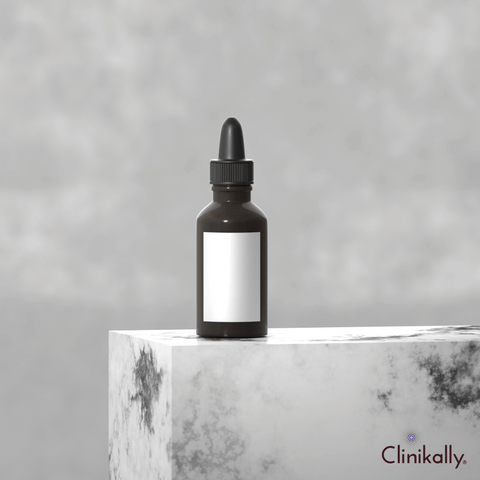
Urea is a naturally occurring substance that is found in the skin, and it has both hydrating and exfoliating properties. It can be used in skincare products to help improve the appearance of dry, rough, or bumpy skin, including keratosis pilaris (KP). Here are some benefits of urea for hydration and exfoliation:
-
Hydration: Urea is a humectant, which means it can help to draw moisture into the skin and retain it there. This can help to improve the skin's natural moisture barrier, which can reduce dryness and flakiness associated with KP.
-
Exfoliation: Urea can also help to exfoliate the skin by breaking down the build-up of dead skin cells and keratin that can cause bumps and roughness. This can help to smooth out the skin and reduce the appearance of KP.
-
Non-irritating: Urea is a gentle exfoliant that is less likely to cause irritation or sensitivity compared to other exfoliants, such as alpha-hydroxy acids (AHAs) or beta-hydroxy acids (BHAs).
-
Skin penetration: Urea has small molecules that can penetrate deep into the skin, which can help to improve the skin's overall hydration levels and reduce the appearance of fine lines and wrinkles.
Urea is available in various concentrations, and it's important to start with a low concentration and gradually work your way up to higher concentrations if needed. It's also important to use sunscreen when using urea, as it can increase the skin's sensitivity to the sun. While urea can be effective in managing KP and other skin conditions, it may not completely eliminate the condition on its own. It's best to use urea in combination with other treatments, such as moisturizers or chemical peels, to achieve the best results. If you have concerns about your skin or if your symptoms are severe, you should see a dermatologist for advice and treatment options.
Jojoba Oil to Soothe and Moisturize Skin
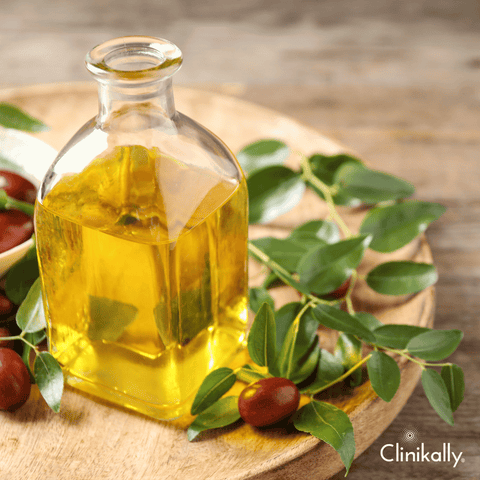
Jojoba oil is a natural oil derived from the seeds of the jojoba plant, and it has many beneficial properties for the skin. It is a popular ingredient in skincare products, including those designed to soothe and moisturize dry, rough, or bumpy skin, such as keratosis pilaris (KP). Here are some benefits of jojoba oil for the skin:
-
Moisturization: Jojoba oil is very similar to the natural oils produced by the skin, which means it can help to hydrate and moisturize the skin without clogging pores. This can help to improve the appearance of dry, flaky, or bumpy skin.
-
Anti-inflammatory: Jojoba oil has anti-inflammatory properties, which can help to reduce redness and inflammation associated with KP or other skin conditions.
-
Antioxidant: Jojoba oil contains vitamin E, which is a powerful antioxidant that can help to protect the skin from damage caused by free radicals and environmental stressors.
-
Non-greasy: Jojoba oil is lightweight and non-greasy, which means it can be easily absorbed into the skin without leaving a heavy or oily residue.
-
Skin barrier: Jojoba oil can help to improve the skin's natural moisture barrier, which can reduce water loss and improve the skin's overall health and appearance.
Jojoba oil can be used as a standalone moisturizer or in combination with other skincare products, such as lotions or creams, to enhance their moisturizing and soothing properties. It's important to choose a high-quality, pure jojoba oil that is free from additives or other chemicals that could irritate the skin. While jojoba oil can be effective in managing KP and other skin conditions, it may not completely eliminate the condition on its own. It's best to use jojoba oil in combination with other treatments, such as exfoliants or chemical peels, to achieve the best results. If you have concerns about your skin or if your symptoms are severe, you should see a dermatologist for advice and treatment options.
Coconut Oil for Natural Moisturization
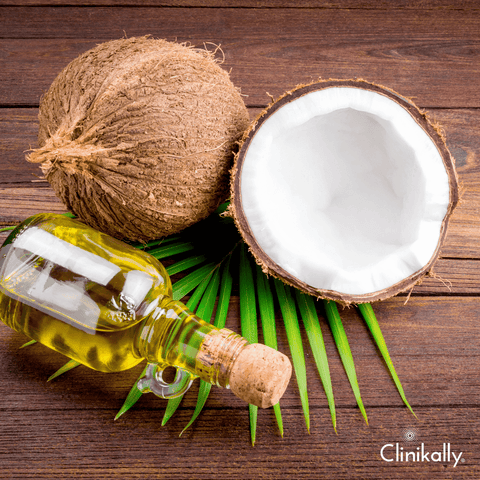
Coconut oil is a natural oil that is commonly used for moisturizing the skin. It is rich in fatty acids, which can help to hydrate and nourish the skin, making it a popular choice for people with dry or rough skin, including those with keratosis pilaris (KP). Here are some benefits of coconut oil for the skin:
-
Moisturization: Coconut oil is a rich source of fatty acids, which can help to hydrate and moisturize the skin. It can penetrate deeply into the skin, leaving it soft and supple.
-
Anti-inflammatory: Coconut oil has anti-inflammatory properties, which can help to reduce redness and inflammation associated with KP or other skin conditions.
-
Antibacterial: Coconut oil contains lauric acid, which has antibacterial properties that can help to prevent infections and breakouts.
-
Antioxidant: Coconut oil is a rich source of antioxidants, which can help to protect the skin from damage caused by free radicals and environmental stressors.
-
Non-comedogenic: Coconut oil is considered to be non-comedogenic, which means it is unlikely to clog pores or cause acne breakouts.
Coconut oil can be used as a standalone moisturizer or in combination with other skincare products, such as lotions or creams, to enhance their moisturizing properties. However, it is important to note that some people may be sensitive to coconut oil, and it may not be suitable for all skin types. Additionally, while coconut oil can help to improve the appearance of KP, it may not completely eliminate the condition on its own. It's best to use coconut oil in combination with other treatments, such as exfoliants or chemical peels, to achieve the best results. If you have concerns about your skin or if your symptoms are severe, you should see a dermatologist for advice and treatment options.
Oatmeal Baths for Soothing Irritation
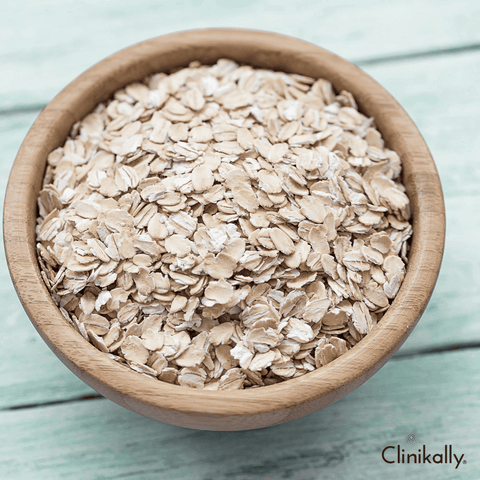
Oatmeal baths are a natural remedy that can help to soothe and relieve irritated skin, including skin affected by keratosis pilaris (KP). Oatmeal contains anti-inflammatory properties that can help to reduce redness, itching, and irritation. Here are some benefits of oatmeal baths for the skin:
-
Soothing: Oatmeal baths can help to soothe irritated skin, reducing redness, itching, and inflammation associated with KP or other skin conditions.
-
Hydrating: Oatmeal contains beta-glucan, a substance that can help to hydrate and moisturize the skin, leaving it soft and supple.
-
Anti-inflammatory: Oatmeal contains anti-inflammatory properties that can help to reduce inflammation and redness, making it a great choice for people with sensitive or irritated skin.
-
Cleansing: Oatmeal can help to cleanse the skin, removing dirt, oil, and impurities that can contribute to skin irritation and inflammation.
To take an oatmeal bath, simply grind plain, uncooked oatmeal into a fine powder and add it to your bath water. Soak in the bath for at least 15-20 minutes, gently rubbing the oatmeal powder onto your skin to exfoliate and soothe the affected areas. After your bath, rinse your skin with clean water and pat it dry with a soft towel. You can also apply a moisturizer, such as a coconut oil or jojoba oil, to help lock in hydration.
While oatmeal baths can be effective in soothing irritated skin, they may not completely eliminate KP on their own. It's best to use oatmeal baths in combination with other treatments, such as moisturizers or exfoliants, to achieve the best results. If your symptoms are severe or if you have concerns about your skin, you should see a dermatologist for advice and treatment options.
Laser Therapy for Stubborn Keratosis Pilaris
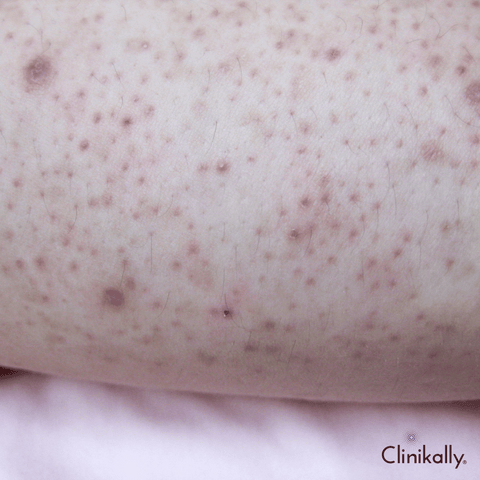
Laser therapy is a treatment option for stubborn cases of keratosis pilaris (KP) that have not responded to other treatments. Laser therapy can help to improve the appearance of KP by reducing redness, inflammation, and bumps on the skin. Here are some benefits of laser therapy for KP:
-
Targeted Treatment: Laser therapy is a targeted treatment that can be customized to the specific needs of each patient. It can be used to target the affected areas of the skin, reducing redness, inflammation, and bumps without affecting the surrounding skin.
-
Non-invasive: Laser therapy is a non-invasive treatment that does not require incisions or injections. It is generally considered to be safe and well-tolerated, with minimal side effects.
-
Fast Recovery: Laser therapy for KP typically has a fast recovery time, with most patients able to return to their normal activities immediately after treatment.
-
Long-lasting Results: Laser therapy can provide long-lasting results, reducing the appearance of KP for months or even years after treatment.
There are several types of laser therapy that can be used to treat KP, including pulsed dye laser (PDL) and intense pulsed light (IPL). These lasers work by targeting the blood vessels in the skin, reducing redness and inflammation. They can also stimulate collagen production, improving the texture and tone of the skin.
Laser therapy for KP is not suitable for everyone, and it may not be effective for all cases of the condition. It's important to consult with a dermatologist to determine whether laser therapy is the right treatment option for you. They can evaluate your skin condition and medical history, and recommend the best course of treatment for your individual needs.
When to See a Dermatologist for Keratosis Pilaris

Keratosis pilaris (KP) is a common and usually harmless skin condition that can be managed with over-the-counter treatments. However, in some cases, KP may be severe or persistent, and may require medical attention from a dermatologist. Here are some situations when you should see a dermatologist for KP:
-
Severe Symptoms: If your KP is causing severe itching, redness, or inflammation, or if it is interfering with your daily activities, you should see a dermatologist. They can evaluate your symptoms and recommend the appropriate treatment.
-
Persistent Symptoms: If your KP does not improve with over-the-counter treatments, or if it recurs frequently, you may need to see a dermatologist. They can assess your condition and prescribe stronger medications or other treatments to help manage your symptoms.
-
Cosmetically Concerning: If you are bothered by the appearance of your skin due to KP, such as widespread redness or prominent bumps, a dermatologist can offer cosmetic treatments to improve the appearance of your skin.
-
Unsure Diagnosis: If you are unsure whether your skin condition is KP or another condition, it's best to see a dermatologist for an accurate diagnosis. They can examine your skin and perform any necessary tests to determine the cause of your symptoms.
Overall, if you have concerns about your skin, it's always a good idea to consult with a dermatologist. They can provide expert advice and recommend the most effective treatments for your individual needs.









































